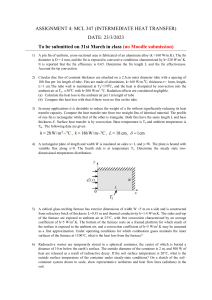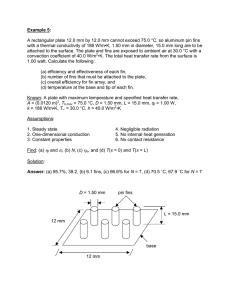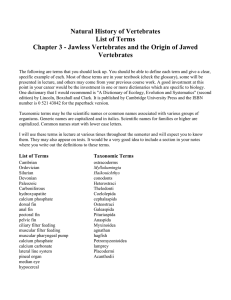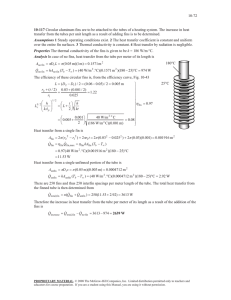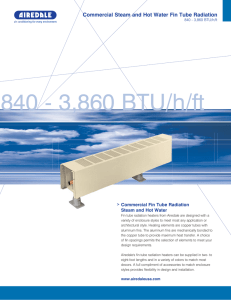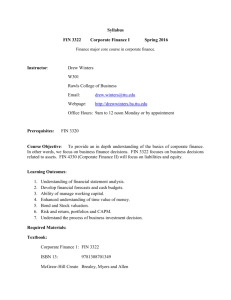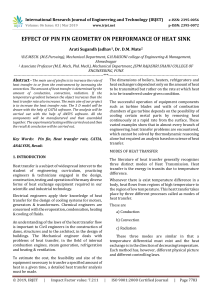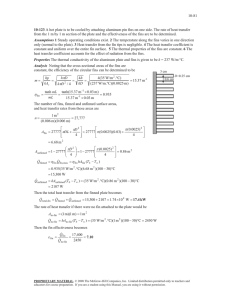Heat Transfer Fin Analysis Examples
advertisement
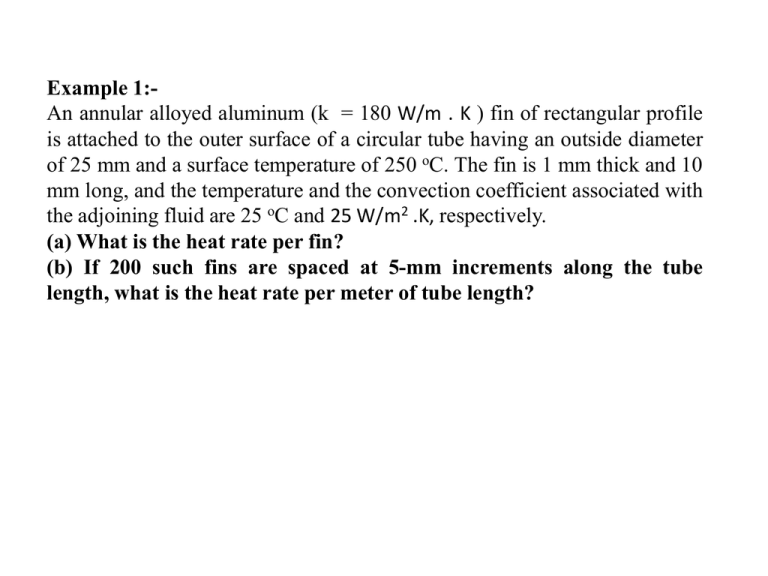
Example 1:An annular alloyed aluminum (k = 180 W/m . K ) fin of rectangular profile is attached to the outer surface of a circular tube having an outside diameter of 25 mm and a surface temperature of 250 oC. The fin is 1 mm thick and 10 mm long, and the temperature and the convection coefficient associated with the adjoining fluid are 25 oC and 25 W/m2 .K, respectively. (a) What is the heat rate per fin? (b) If 200 such fins are spaced at 5-mm increments along the tube length, what is the heat rate per meter of tube length? Example 2 ) The end of a rectangular bar surrounded by insulation is maintained at 100 oC and is exposed to ambient air as shown in the schematic. A linear array of pin fins (N =10) is affixed to the end surface to enhance the heat transfer rate from the bar. The pin fins (k = 65 W/m . K) are 3 mm in diameter and 12 mm long. The ambient air temperature is 25 oC, and the convection coefficient over the bar end surface and pin fins is equal to 10 W/m2 . K. Example 3) Compare the temperature distributions in a straight cylindrical rod having a diameter of 2 cm and a length of 10 cm and exposed to a convection environment with h=25 W/m2 ・ ◦C, for three fin materials: copper [k =385 W/m・ ◦C], stainless steel [k =17 W/m・ ◦C], and glass [k =0.8 W/m・ ◦C]. Also compare the relative heat flows and fin efficiencies. These values may be inserted into Equation of temperature distribution to calculate the temperatures at different x locations along the rod, and the results are shown in Figure Example 2-8. We notice that the glass behaves as a “very long” fin, and its behavior could be calculated. The fin efficiencies are calculated from Equation by using the corrected length approximation of Equation of corrected length given. We have The parameters of interest for the heat-flow and efficiency comparisons are now tabulated as To compare the heat flows we could either calculate the values from Equations for a unit value of θ0 or observe that the fin efficiency gives a relative heat-flow comparison because the maximum heat transfer is the same for all three cases; i.e., we are dealing with the same fin size, shape, and value of h. We thus calculate the values of ηf from Equation and the above values of mLc. The temperature profiles in the accompanying figure can be somewhat misleading. The glass has the steepest temperature gradient at the base, but its much lower value of k produces a lower heat-transfer rate.
